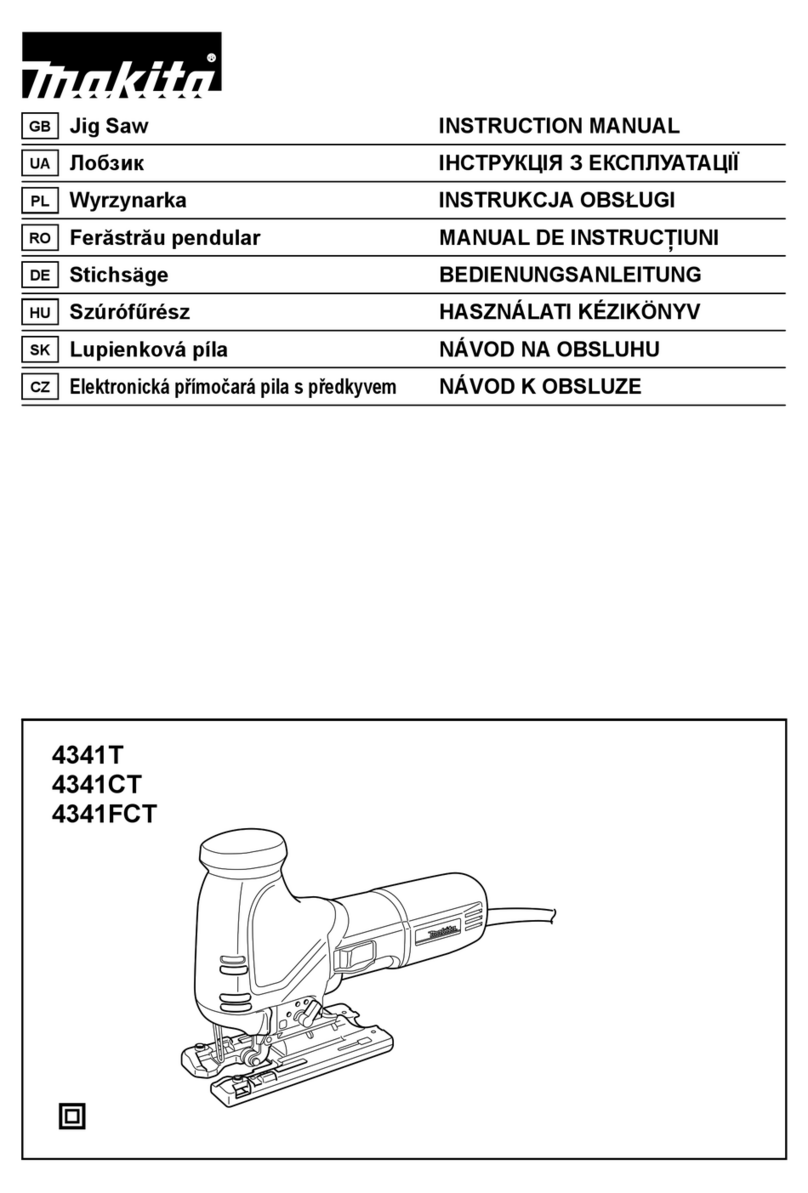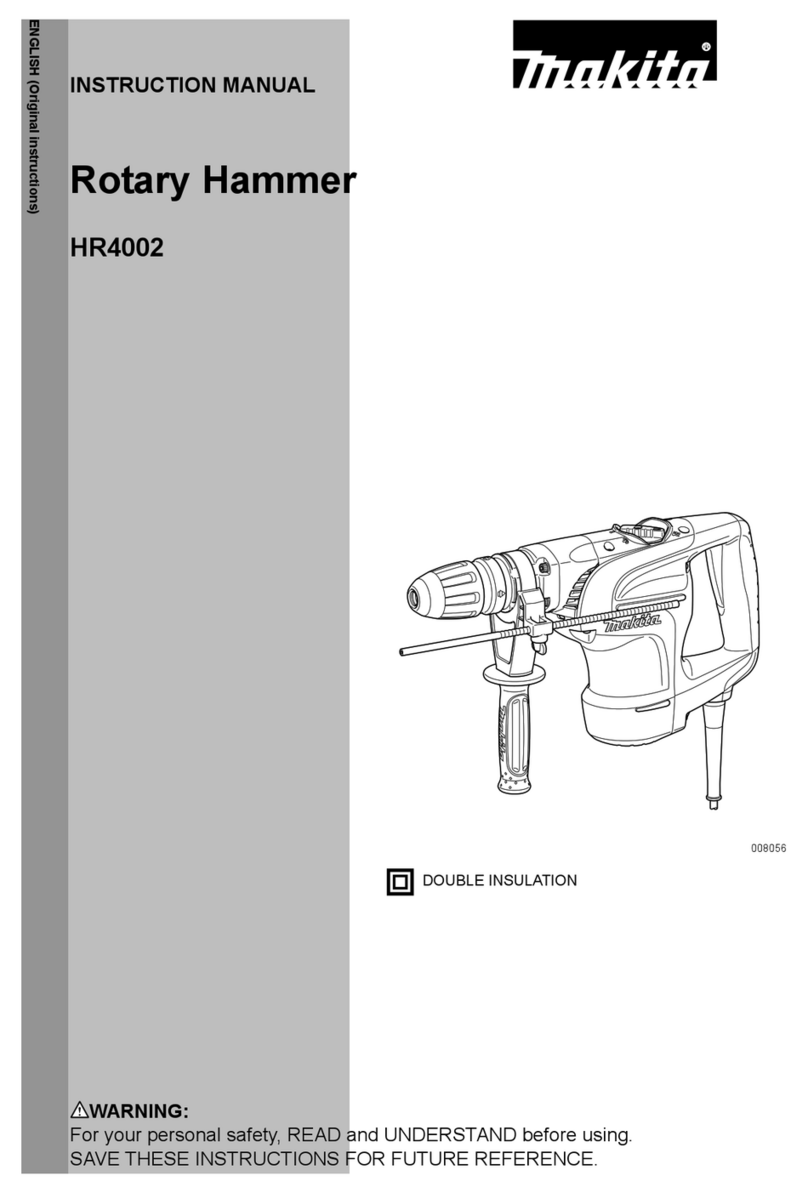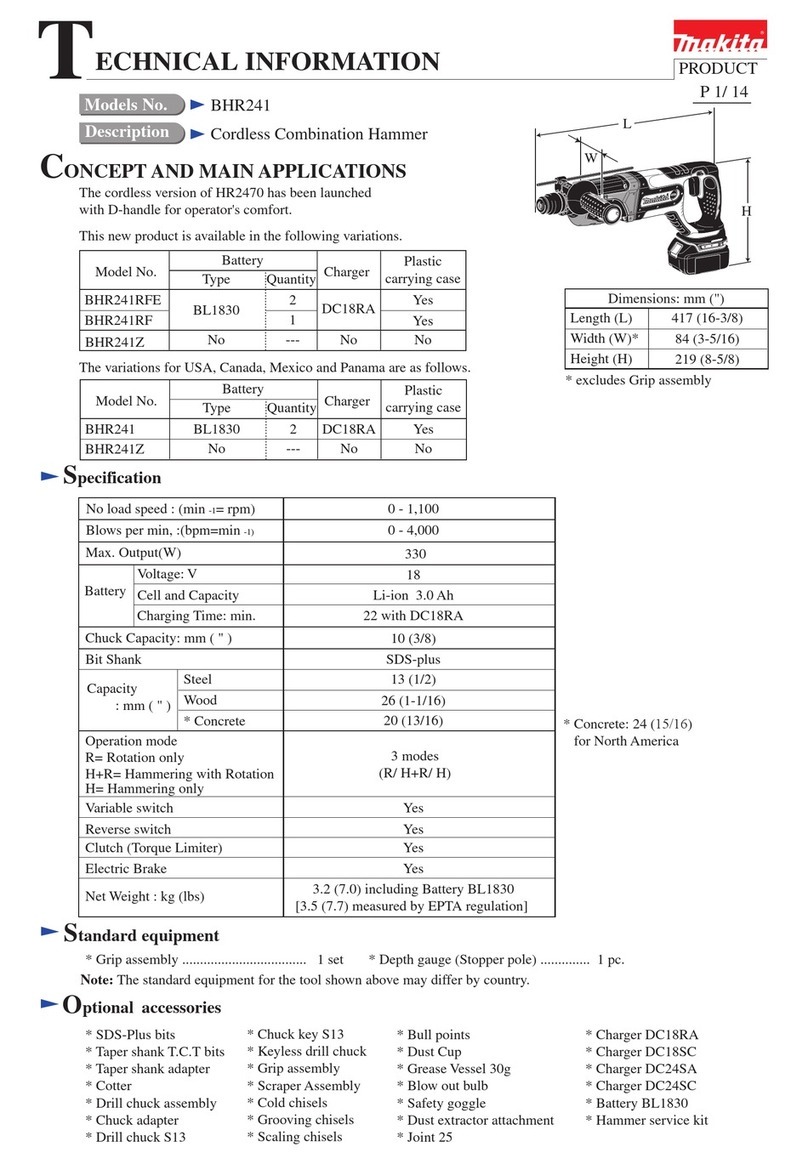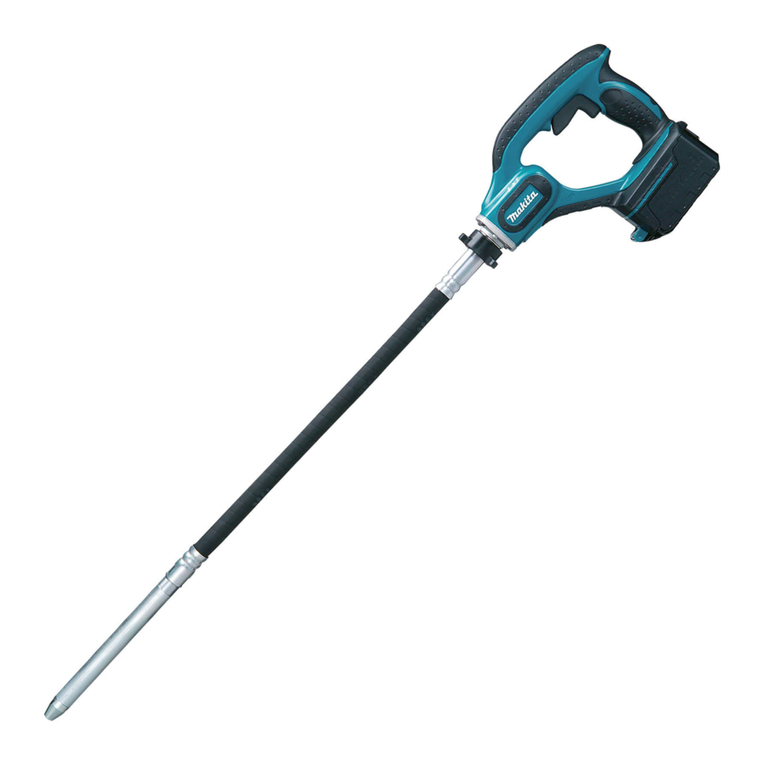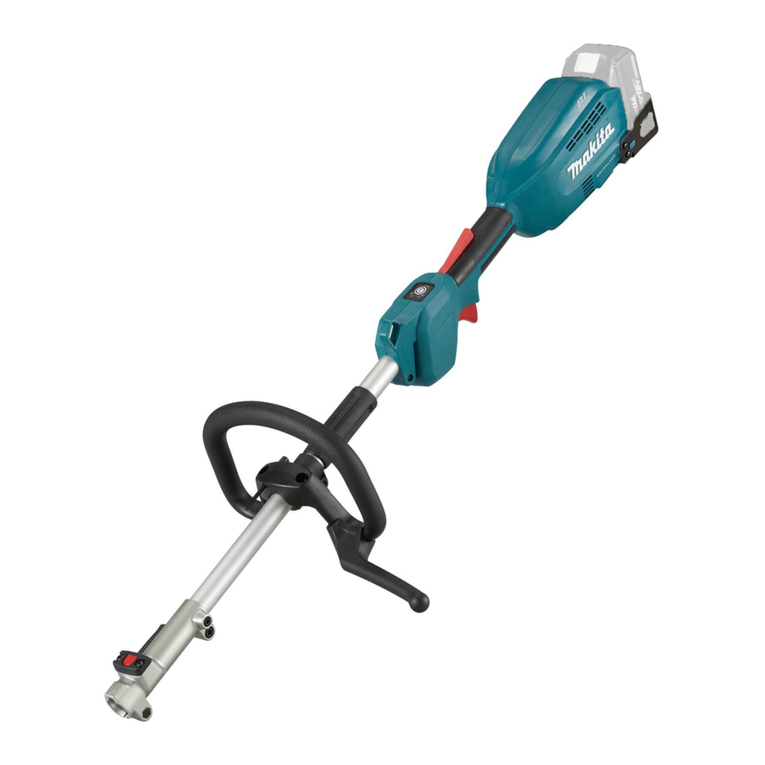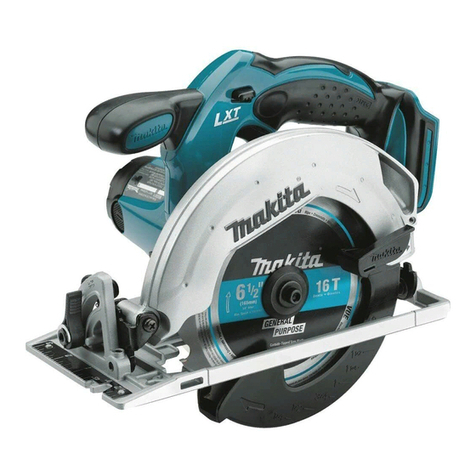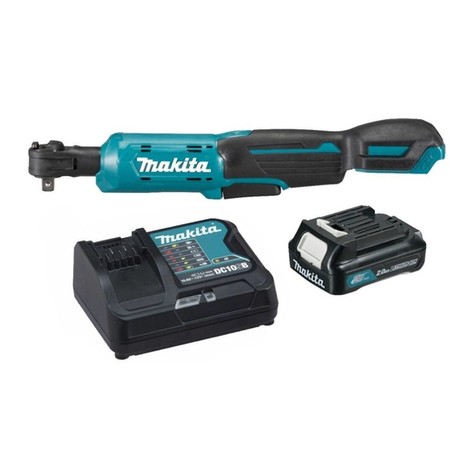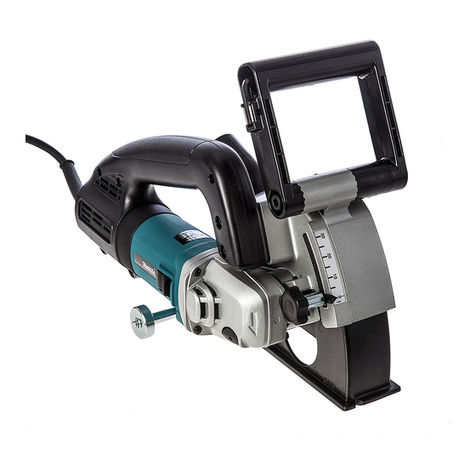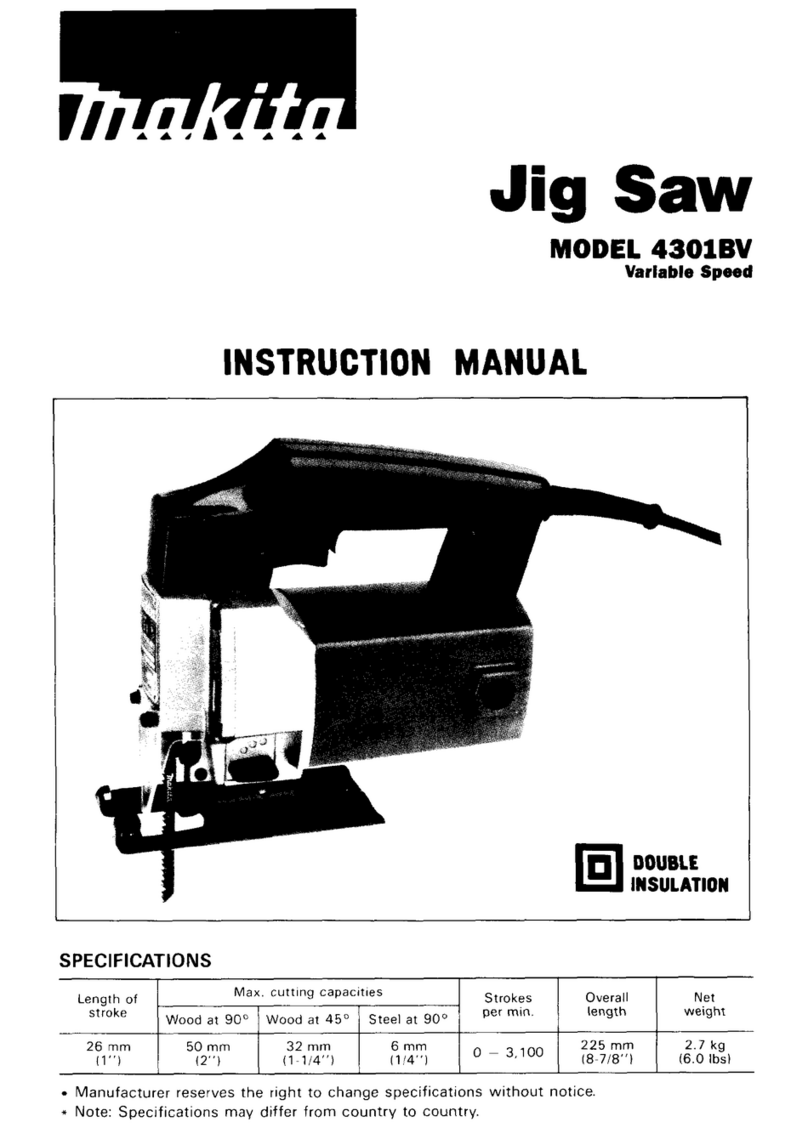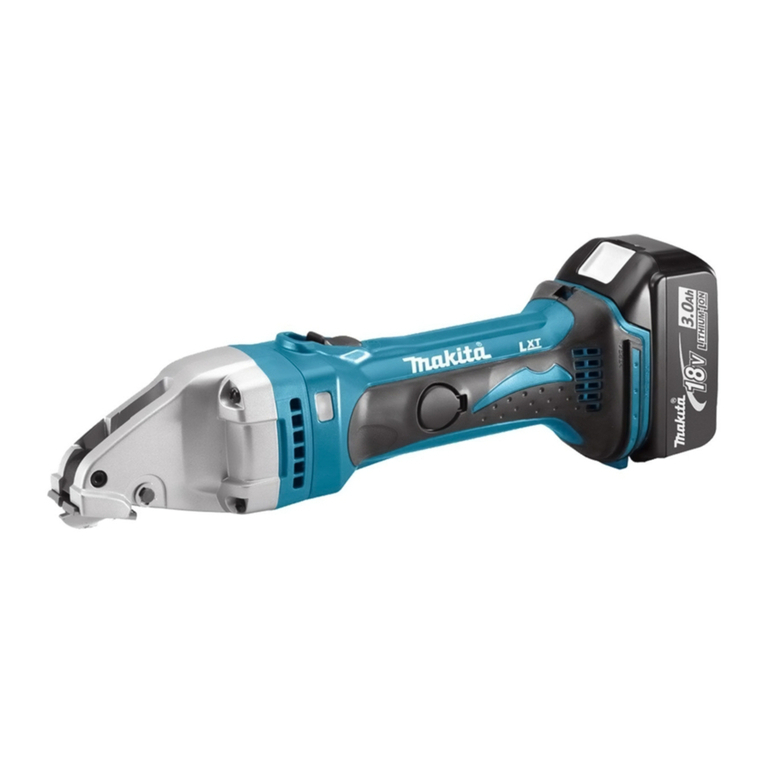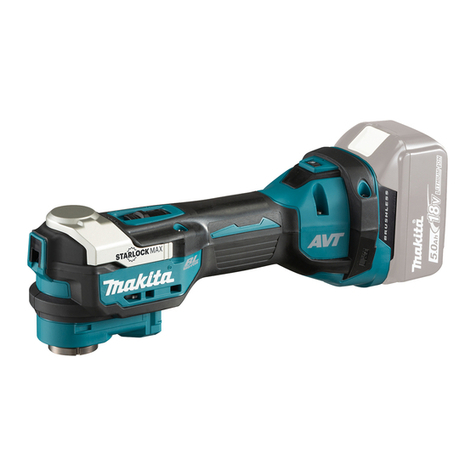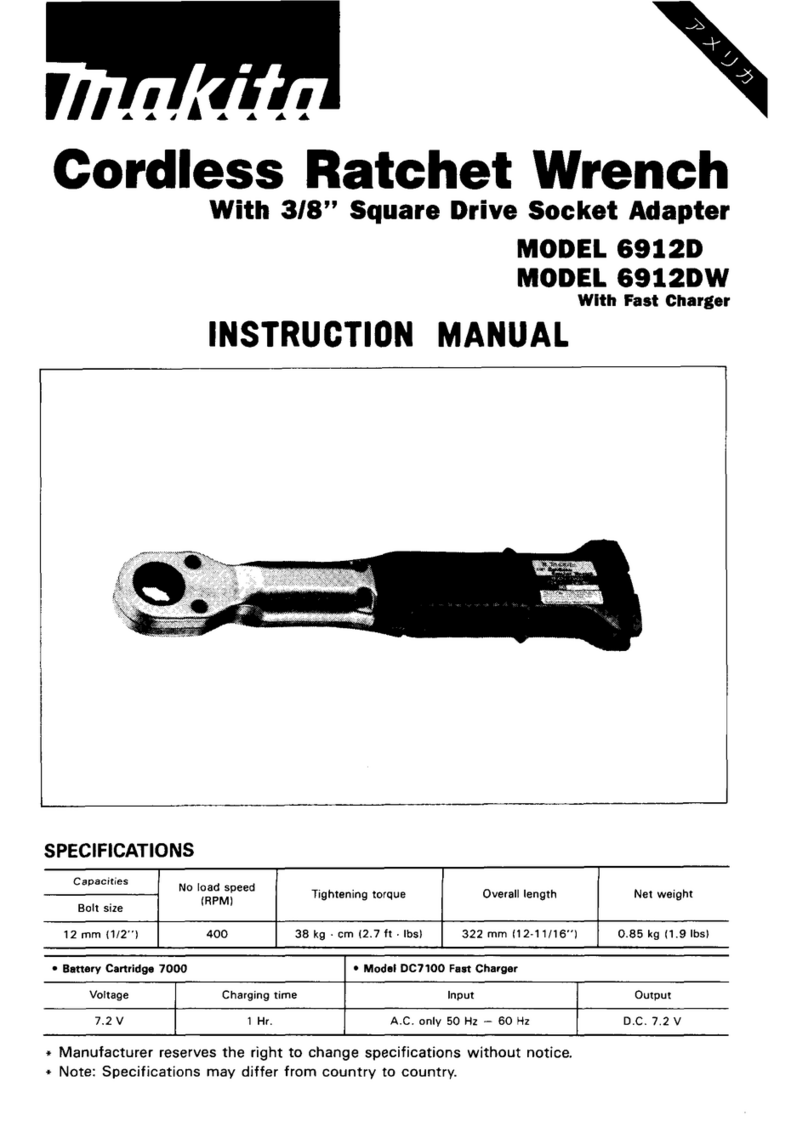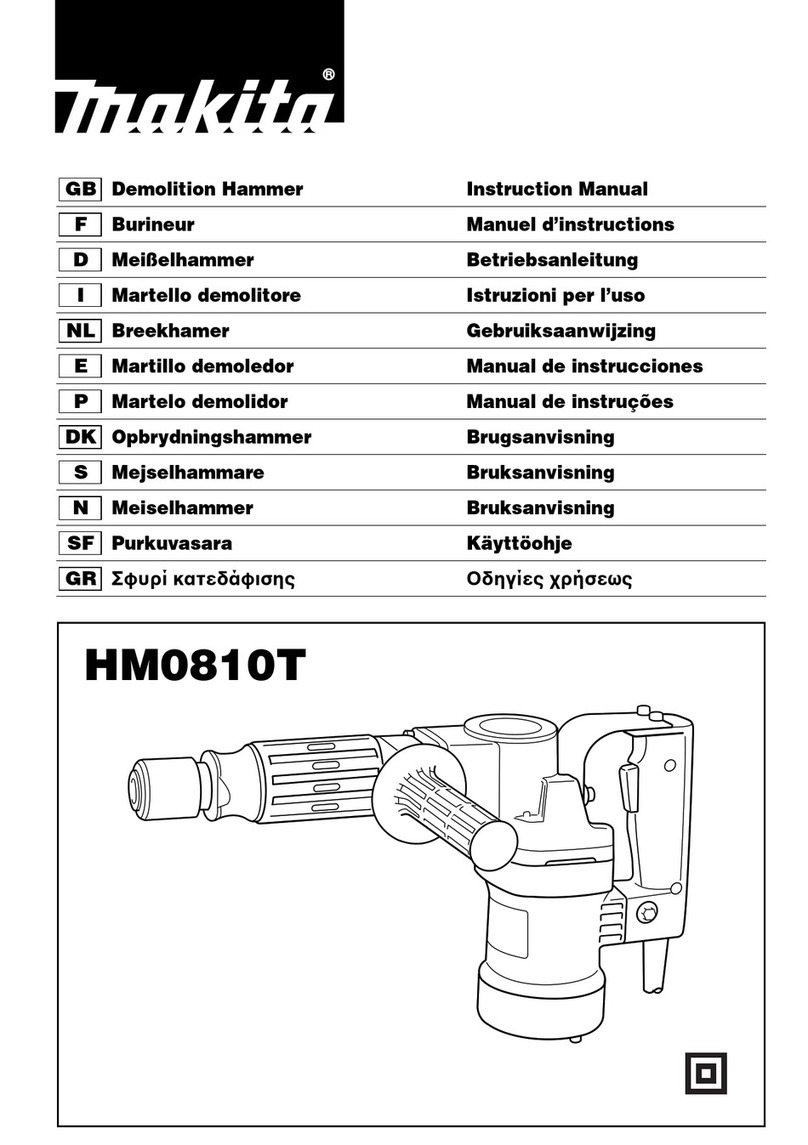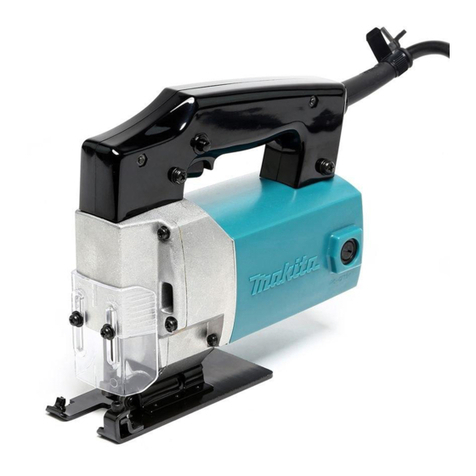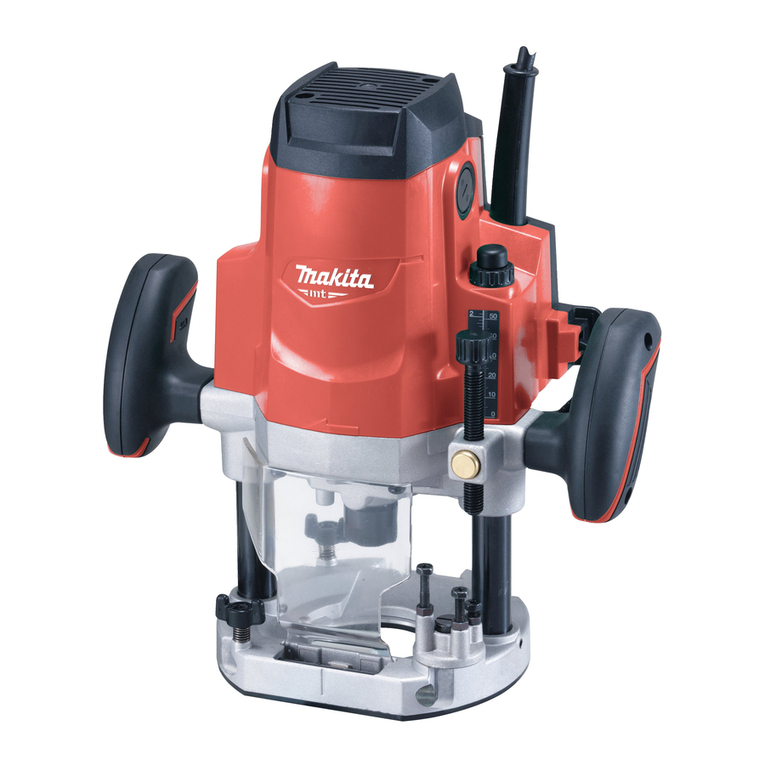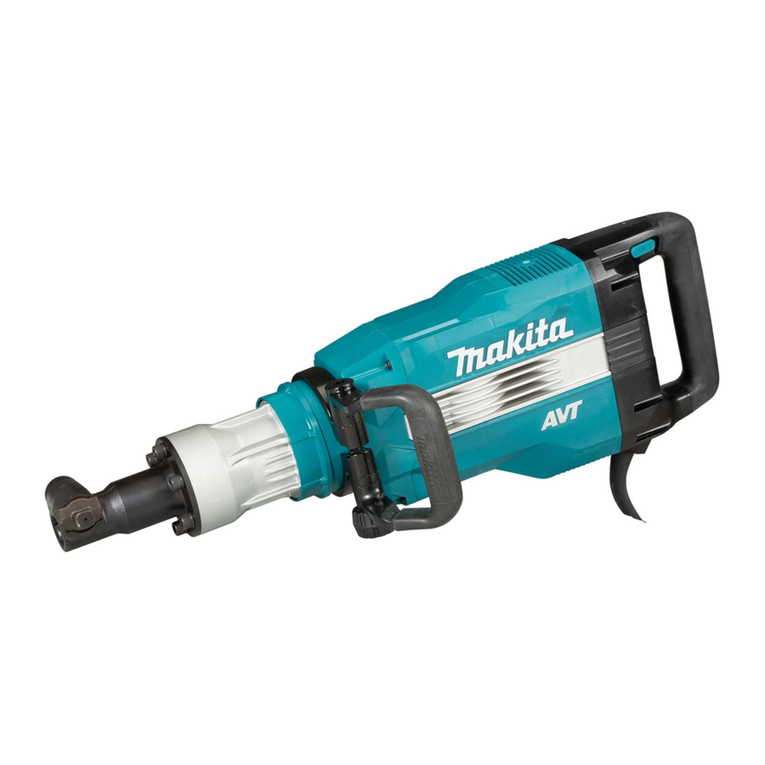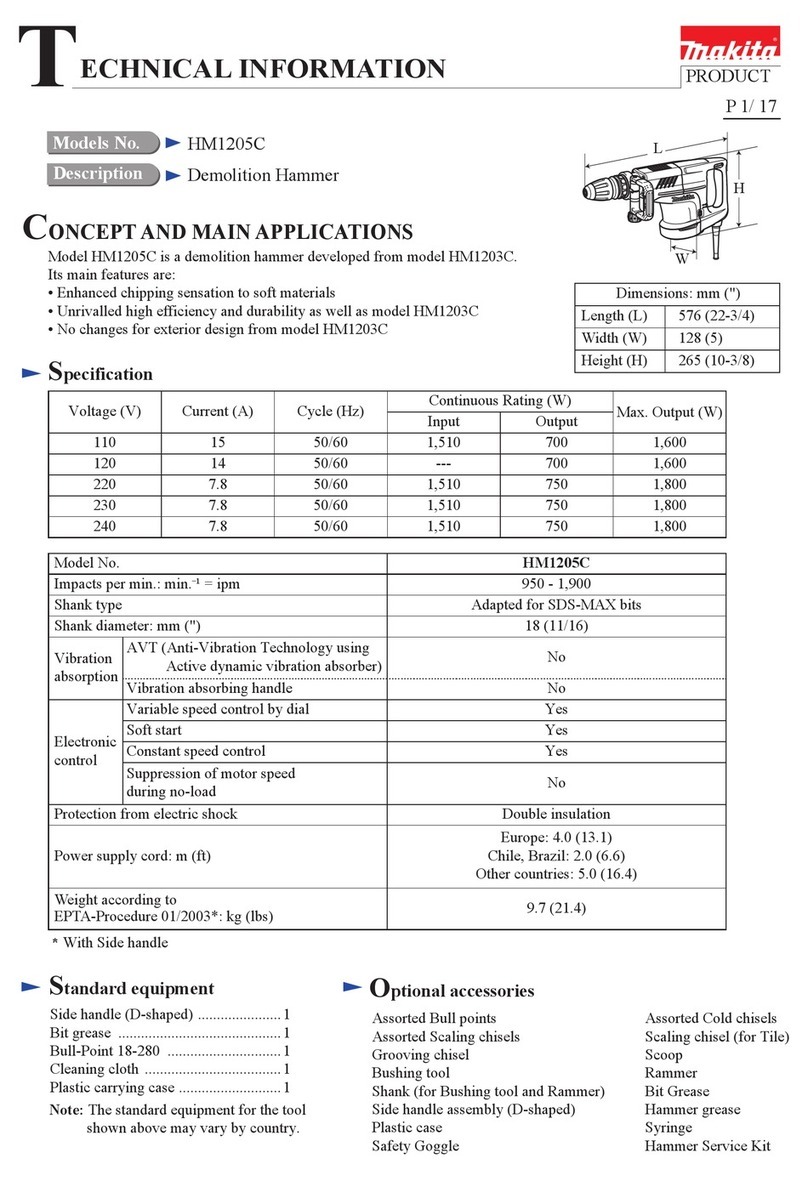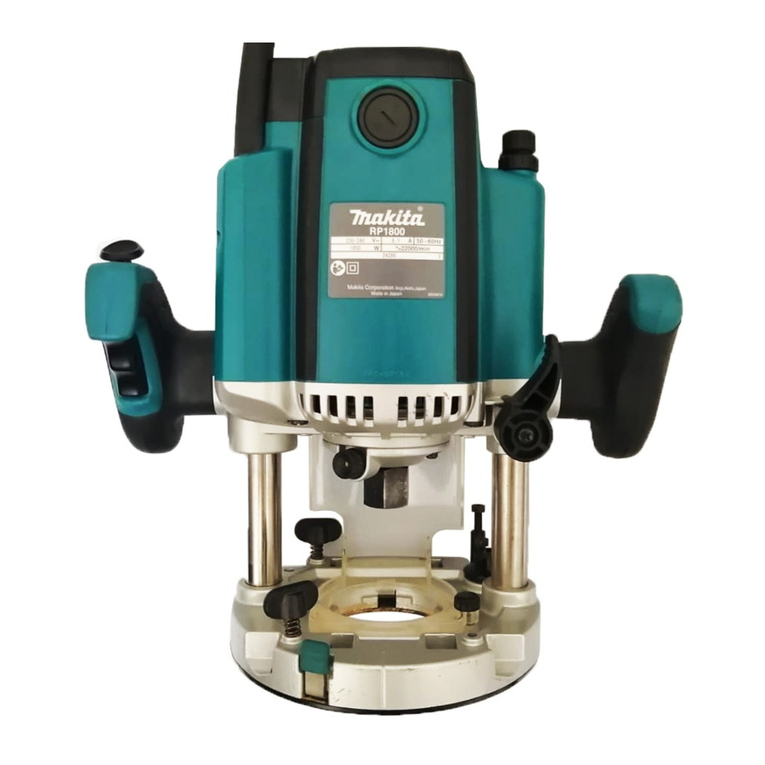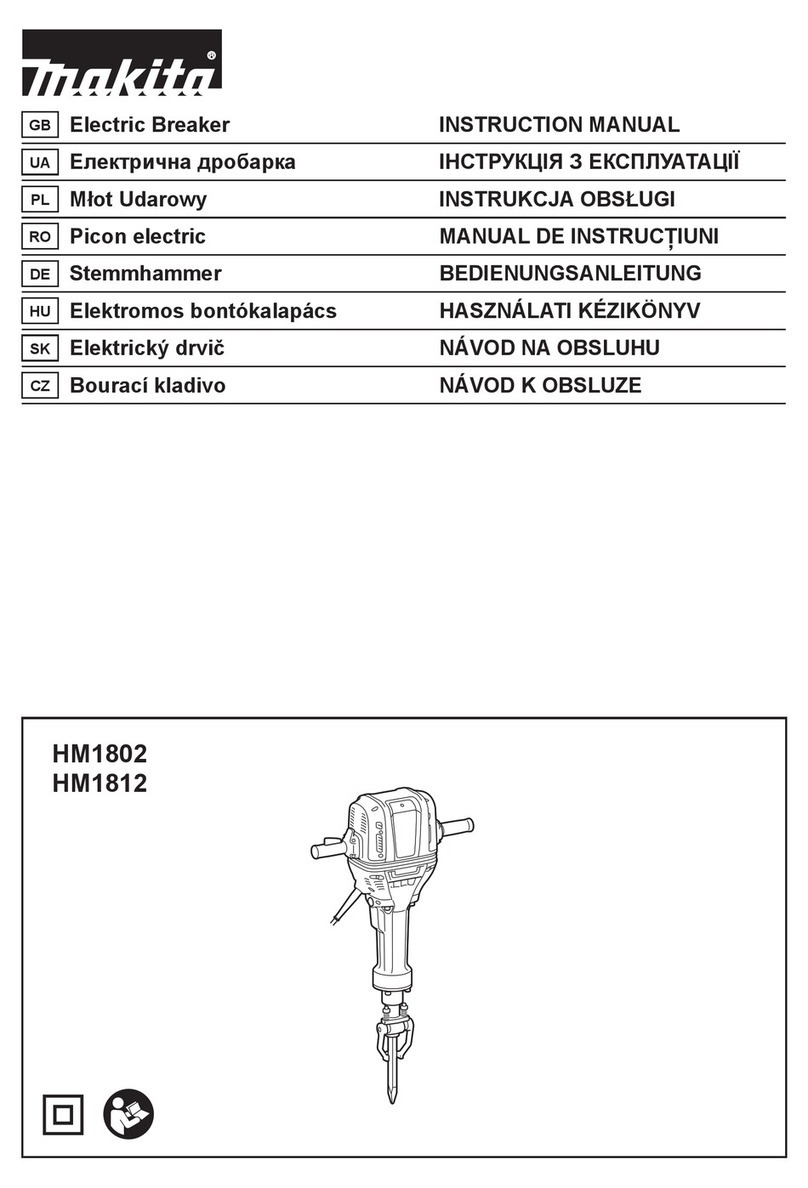20
WAARSCHUWING:
LAAT NIET uw vertrouwdheid met het gereedschap
(na regelmatig gebruik) omslaan in slordigheid of
onachtzaamheid omtrent de strikt na te leven
veiligheidsvoorschriften voor dit product.
VERKEERD GEBRUIK of het niet naleven van de
veiligheidsvoorschriften in deze gebruiksaanwijzing
kan leiden tot ernstige verwondingen.
BESCHRIJVING VAN DE FUNCTIES
LET OP:
• Zorg altijd dat het gereedschap is uitgeschakeld en de
stekker uit het stopcontact is verwijderd alvorens de
functies op het gereedschap te controleren of af te
stellen.
Werking van de schakelaar (Fig. 1)
LET OP:
• Controleer voordat u de stekker in het stopcontact
steekt, altijd even of de trekkerschakelaar goed werkt
en bij loslaten naar de “UIT”-stand terugkeert.
• De schakelaar kan in de “AAN”-stand vergrendeld
worden, hetgeen bij langdurig gebruik comfortabeler
werkt. Wees extra voorzichtig wanneer u de schakelaar
in de “AAN”-stand vergrendelt en houd het
gereedschap altijd stevig vast.
Om het gereedschap te starten, drukt u enkel de
trekkerschakelaar in. Laat de trekkerschakelaar los om
te stoppen.
Voor continu gebruik houdt u de trekkerschakelaar
ingedrukt en drukt u daarbij de vergrendelknop in.
Om het gereedschap te stoppen vanuit de vergrendelde
stand, drukt u de trekkerschakelaar helemaal in en laat u
die vervolgens los.
Toegestane snijdikte (Fig. 2)
De groef in het juk doet dienst als diktemaat voor de te
knippen zachtstaalplaat of roestvrijstaalplaat. Als het
materiaal in de groef past, kan het gereedschap dit
knippen.
De dikte van het door te knippen materiaal hangt af van
het soort materiaal (de treksterkte ervan). De maximale
knipdikte voor diverse materialen wordt in de tabel
hieronder aangegeven. Probeer niet om materialen te
knippen met een grotere dikte dan hier staat
aangegeven, want dat kan leiden tot defecten aan het
gereedschap en/of lichamelijk letsel. Werk dus altijd
binnen de dikte die in de tabel staat aangegeven.
006426
INEENZETTEN
LET OP:
• Zorg altijd dat het gereedschap is uitgeschakeld en de
stekker uit het stopcontact is verwijderd alvorens enig
werk aan het gereedschap uit te voeren.
Controle van de messen
Controleer vóór het gebruik van het gereedschap altijd
eerst de messen op slijtage. Botte of versleten messen
veroorzaken een slechte knipbeweging en verkorten de
levensduur van het gereedschap.
De levensduur van de messen hangt af van het te
snijden materiaal en de ingestelde tussenruimte van de
messen.
Over het algemeen kan een mes ongeveer 500 m aan
3,2 mm dik zacht staal knippen met een enkele snijrand
(dus in totaal 2 000 m met vier snijranden).
Draaien of vervangen van de snijmessen (Fig. 3,
4, 5, 6 en 7)
Zowel het bovenste als het onderste mes heeft aan beide
kanten (de voor- en achterkant) vier snijranden. Wanneer
de snijrand bot geworden is, dient u het bovenste en
onderste mes 90° te draaien zodat de nieuwe snijranden
zichtbaar worden.
Wanneer alle acht randen van zowel het onderste als het
bovenste mes bot geworden zijn, dient u beide messen
door nieuwe te vervangen. Telkens wanneer u de
messen draait of vernieuwt, gaat u als volgt te werk.
Verwijder de borgbouten van de messen met de
bijgeleverde zeskant-inbussleutel en draai of vernieuw
daarna de messen.
Monteer het bovenste mes en zet de borgbout van het
bovenste mes vast met de zeskant-inbussleutel. Druk
het bovenste mes omhoog terwijl u de bout vastzet.
Na het vastzetten van het bovenste mes dient u op te
letten dat er geen kier of speling open blijft tussen het
bovenste mes en het afgeschuinde oppervlak van de
meshouder.
Monteer dan het onderste mes net als het bovenste mes
en stel daarbij de afstand tussen het bovenste en het
onderste mes naar vereist in. Bij het maken van deze
instelling moet het bovenste mes in de verlaagde stand
staan.
Draai eerst de borgbout van het onderste mes ietwat
vast en steek dan de diktemaat er in om de gewenste
speling te bepalen.
De snijdikte wordt aangegeven op de diktemaat, dus
gebruikt u de combinaties aangegeven in de
onderstaande tabel. Verdraai de instelbout van het
onderste mes op het juk totdat de speling zodanig is dat
de diktemaat nauwelijks meer te bewegen is. Draai
vervolgens de borgbout van het onderste mes stevig
vast. Draai tenslotte de zeskantmoer stevig aan om de
instelbout van het onderste mes vast te zetten.
Combinaties van de diktemaat
006427
Maximale snijcapaciteit mm ga.
Staal tot maximaal 400 N/mm23,2 10
Staal tot maximaal 600 N/mm22,5 13
Staal tot maximaal 800 N/mm21,5 17
Aluminium tot maximaal 200 N/mm24,0 9
Dikte materiaal 2,3 mm
(14 ga.)
2,5 mm
(13 ga.)
3,2 mm
(10 ga.)
Combinaties van
de diktemaat 1,0 + 1,5 1,0 + 1,5 1,5 + 2,0
